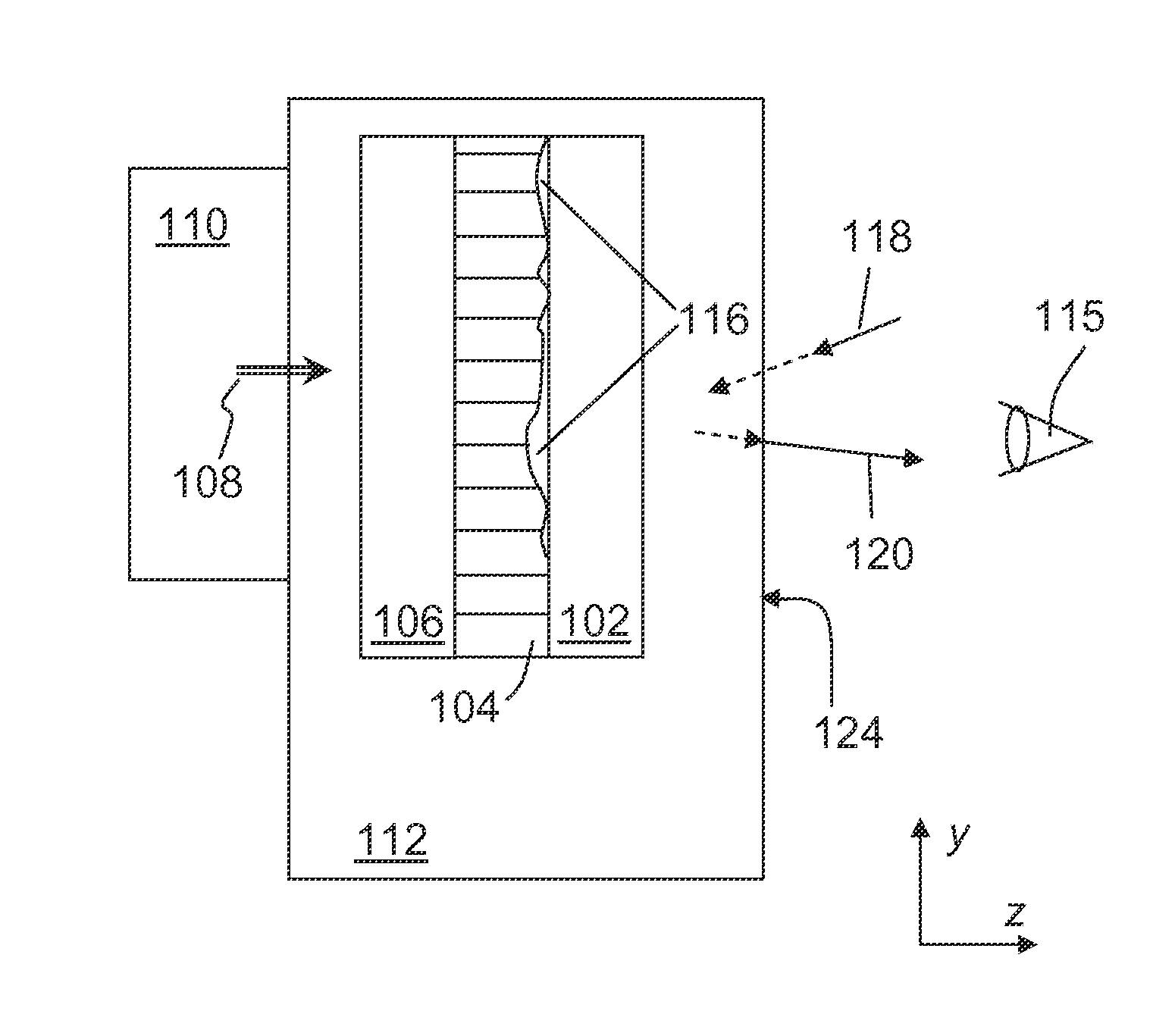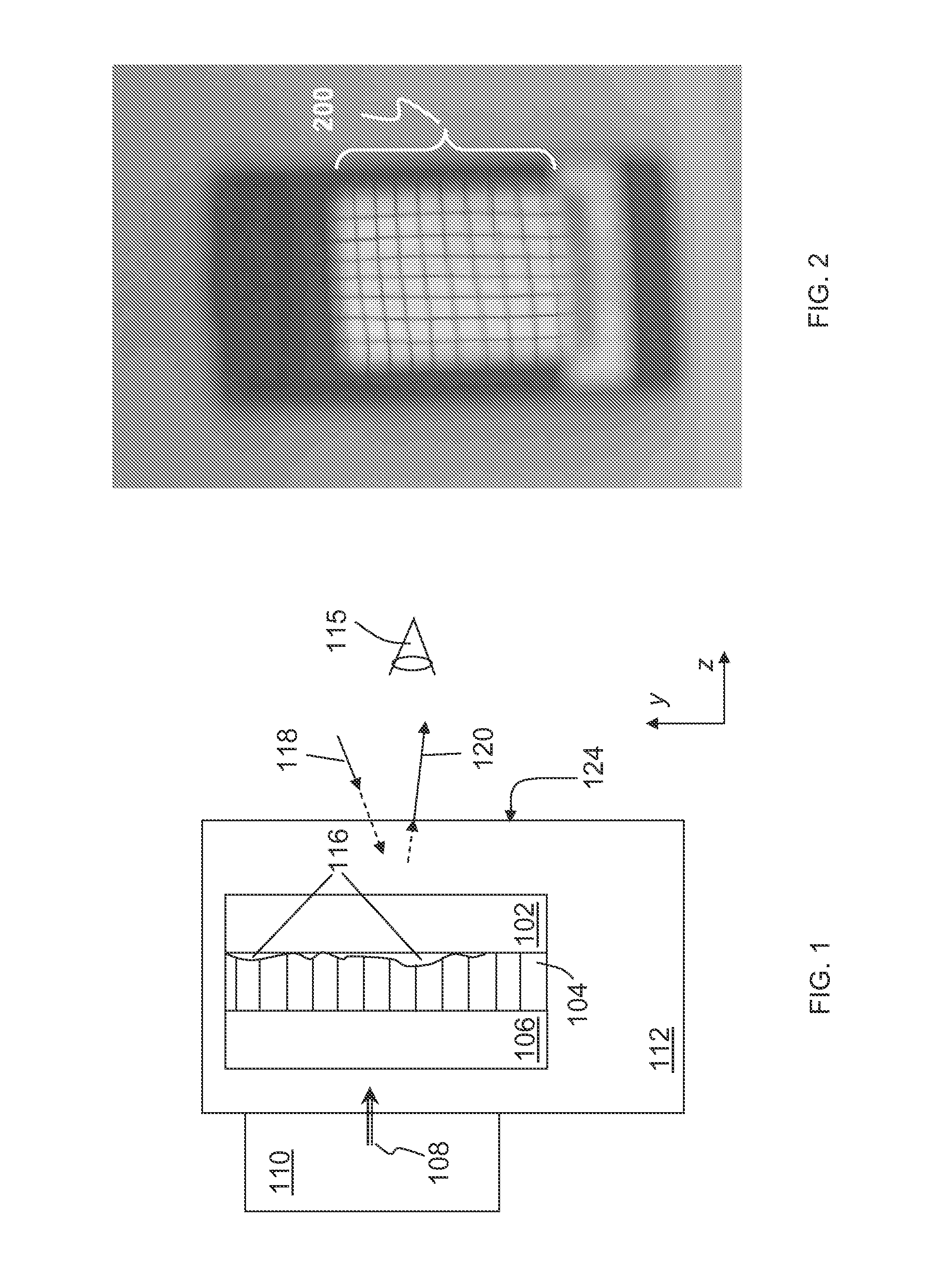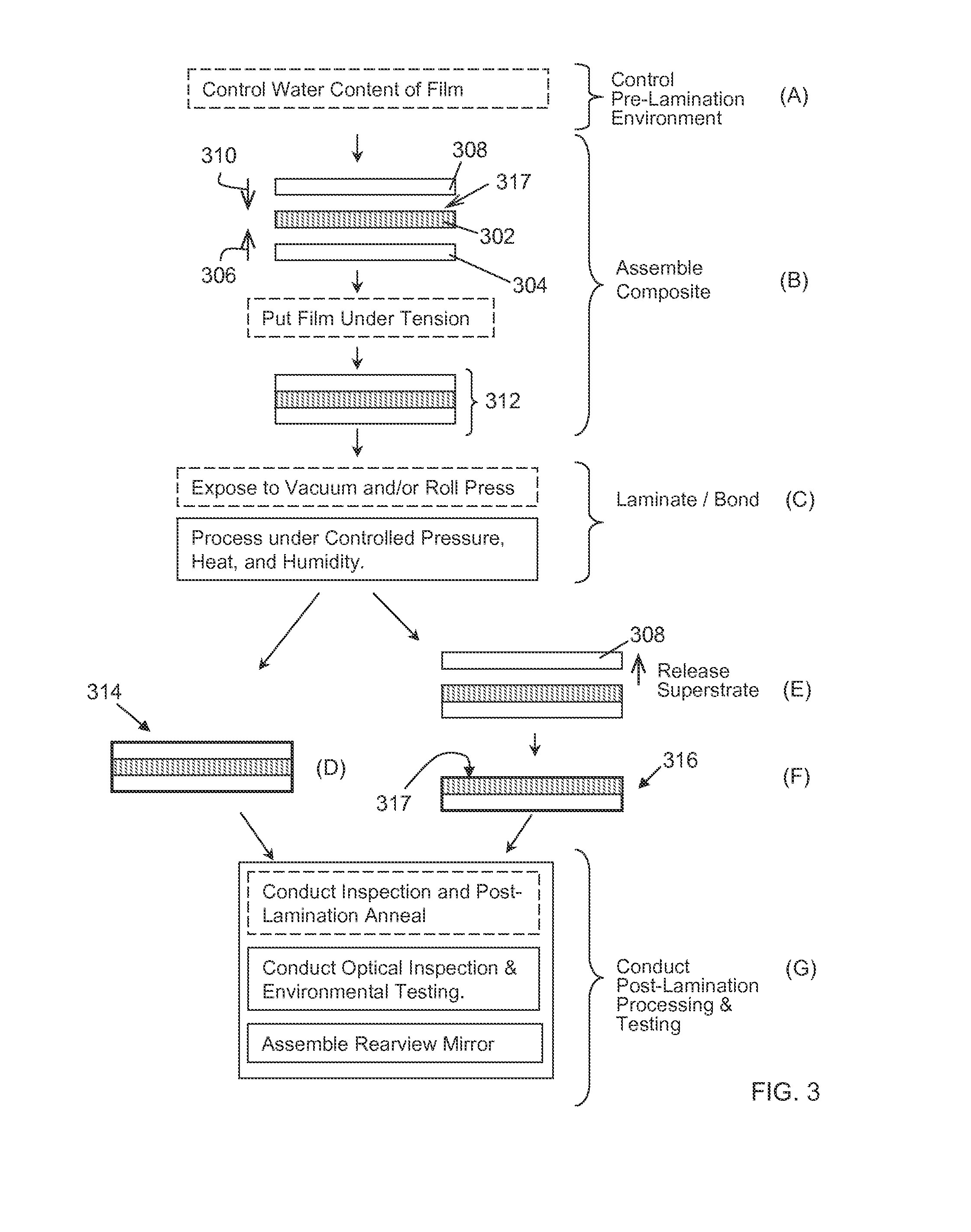Variable reflectance mirror system
a mirror system and variable reflectance technology, applied in the field of polymer-based film laminates, can solve the problems of increasing the area of the overall mirror assembly, impairing the driver's view through the windshield, etc., and achieve the effect of enhancing the strength of the lamination bond and ensuring the flatness of the film
- Summary
- Abstract
- Description
- Claims
- Application Information
AI Technical Summary
Benefits of technology
Problems solved by technology
Method used
Image
Examples
embodiment 1800
[0047]Types of rearview mirror assemblies that contain a display and to which embodiments of the present invention may advantageously be applied include, without limitation, mirrors comprising transflective elements (i.e. elements that are partially transmissive and partially reflective), reflective elements including prismatic reflective elements, and electrochromic mirrors. Transflective optics may be, without limitation, partially transmissive, multichroic, polarization-sensitive, or directionally transmissive. Various rearview mirror structures and related methods of fabrication have been addressed, for example, in U.S. Pat. Nos. 5,818,625, 6,166,848, 6,356,376, 6,700,692, 7,009,751, 7,042,616, 7,221,363, 7,502,156 and U.S. Patent Publication No. 2008 / 0068520, each of which is incorporated herein in its entirety by reference. Displays and transflective optics may be incorporated in various vehicle locations, not only in rearview mirrors (interior or exterior to the vehicle) and ...
embodiment 314
[0065]During the “Laminate / Bond” step (C) of FIG. 3, heat, pressure, and optionally vacuum are applied to the composite 312. In general, the composite may be vacuum-bagged, evacuated, and autoclaved under pressure for time sufficient to bond the film 302 to at least the substrate 304 without forming spatially extended lamination defects described above and to form a substantially image-preserving laminated optical component. It was unexpectedly discovered that application of pressure to the surface of the composite at elevated temperatures, as discussed in the literature, may not be adequate for ironing out the imperfections and wrinkles from the film 302 for the purpose of producing a laminate possessing optical qualities that satisfy automotive industry standards. One possible solution to this problem is to apply substantially omnidirectional pressure (such as that attained in a pressure autoclave) to the laminate composite. Processing parameters and the resulting laminates are fu...
embodiment 600
[0084]A simplified scheme, not to scale, of an embodiment 600 of the mirror assembly is shown in FIG. 6 in a cross-sectional view. The APBF film 602, which is a part of the laminate 606 shared with the EC-element 608, is a 5 mil thick DBEF-Q film manufactured by 3M Inc. A substrate 610 of the laminate 606 includes a 1.6 mm thick soda-lime glass plate performing as a back plate for an approximately 137 μm thick chamber 614 that contains EC-medium. A superstrate 620 of the laminate 606 includes a 1.6 mm soda-lime glass plate 620 that is overcoated, on the surface 624 facing the APBF film 602, with a thin-film stack 630 including, in the order of deposition, approximately 450 Å of titania, TiO2, and approximately 150 Å of indium tin oxide, ITO. The chamber 614 containing the EC-medium is formed by the back glass plate 610 (having surfaces 632 and 634) and a front glass plate 635 (having surfaces 636 and 637). Each of the plates 610 and 635 is coated, on the respective surfaces 632 and ...
PUM
| Property | Measurement | Unit |
|---|---|---|
| pressure | aaaaa | aaaaa |
| pressure | aaaaa | aaaaa |
| temperature | aaaaa | aaaaa |
Abstract
Description
Claims
Application Information
 Login to View More
Login to View More - R&D
- Intellectual Property
- Life Sciences
- Materials
- Tech Scout
- Unparalleled Data Quality
- Higher Quality Content
- 60% Fewer Hallucinations
Browse by: Latest US Patents, China's latest patents, Technical Efficacy Thesaurus, Application Domain, Technology Topic, Popular Technical Reports.
© 2025 PatSnap. All rights reserved.Legal|Privacy policy|Modern Slavery Act Transparency Statement|Sitemap|About US| Contact US: help@patsnap.com



